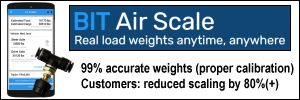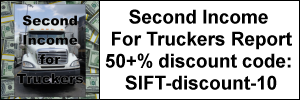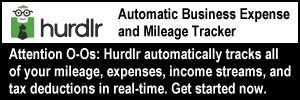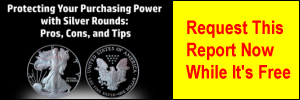All thrifty professional drivers and trucking companies aspire to maximize truck fuel economy on the commercial motor vehicles they drive or manage.
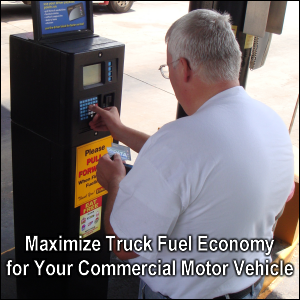 On this page, we will list (and continually update) the ways to eke out as many miles per gallon of diesel used as possible.
On this page, we will list (and continually update) the ways to eke out as many miles per gallon of diesel used as possible.
Of course, there are some things to do and things not to do as part of good truck operations.
Things to Do to Maximize Your Truck Fuel Economy
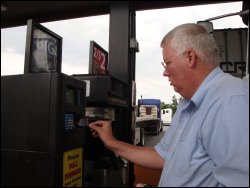 Be as fuel conscious as a hypermiler, although using only legal and safe means to save fuel;
Be as fuel conscious as a hypermiler, although using only legal and safe means to save fuel;- Monitor your usage when you get fuel and when analyzing your truck’s Engine Control Module (ECM) readout; if you change driving styles to see which works best, write it down so you can keep track;
- Set fuel savings goals and reward yourself (or your truck) appropriately for meeting the goals;
- Maximize your truck’s aerodynamics by:
- reducing air resistance (or wind drag) such as by using
- tractor side skirts;
- trailer side skirts;
- trailer nose cones;
- vortex generators;
- trailer tails;
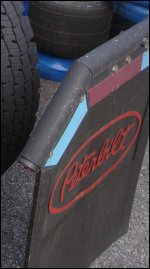 brackets for tractor mud flaps (anti-spray devices in WA state) with a 45-degree angle, etc.; and
brackets for tractor mud flaps (anti-spray devices in WA state) with a 45-degree angle, etc.; and- wheel covers; and
- reducing areas of vacuum (as shown in this Truckinomics YouTube video);
- reducing air resistance (or wind drag) such as by using
- Practice the concept of timing “fresh” and “stale” red and green traffic lights so that you don’t have to use extra fuel on starting from a stop; coast (foot off accelerator) from as far back as is practical to a stop;
- Fine tune your truck’s specifications for maximum fuel economy (some trucking companies unfortunately override manufacturers’ factory settings);
- Let your truck’s cruise control work for you to keep a steady pace and especially when climbing hills (don’t “work the fuel pedal”);
- Run at the speed that maximizes your truck fuel economy (one source quoted Gary Ziebell, a fuel efficiency expert for Kenworth Truck Company, as saying “every mile per hour over 55 costs … one-tenth of a mile per gallon in fuel economy”)(1);
 Stay up-to-date with your truck’s preventive maintenance;
Stay up-to-date with your truck’s preventive maintenance;- Choose your oil carefully; a synthetic might work better in your truck and lengthen the time between oil changes;
- Minimize your rolling resistance as much as possible by selecting tires with tread thickness, width, shape and design to maximize truck fuel economy;
- Select rounded edge mirrors;
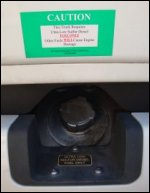 Buy the right fuel blend for your truck;
Buy the right fuel blend for your truck;- Use an appropriate fuel additive;
- Refine your packing list to carry as little practical weight as possible in the tractor;
- Even out weight between drive axles and trailer tandems for better pulling power;
- Drive at a steady pace;
- Reinvest at least part of your fuel savings into products or services that will help you save even more fuel;
- Accelerate gently and smoothly; do the same with braking;
- Drive at the lowest RPMs for each gear (so as not to tax your engine);
- Choose routes, if possible, that eliminate the need to climb hills or mountains (we found one in the Salt Lake City area once);
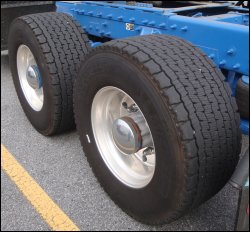 Practice progressive shifting, “changing gears upward as early as possible when accelerating”;
Practice progressive shifting, “changing gears upward as early as possible when accelerating”;- Keep your tires properly inflated at the correct pressure; tire pressure monitoring systems can help;
- Keep your tires properly aligned;
- Optimize drive time to avoid rush hours, congestion and construction (like Mike did once coming south out of Connecticut, going through New York City and making it to North Carolina in a single 11-hour shift);
- Wash your truck periodically (even if you wash it yourself) to cut down on road dirt and salt, and therefore drag;
- Move any license plate from under the bumper to on it to reduce air drag; and
- For drivers of flatbeds, arrange your loads to get the least air resistance.
Things Not to Do to Maximize Your Truck Fuel Economy

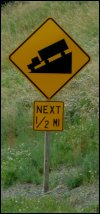 Don’t idle whenever you can (such as by using idling alternatives like window screens, an APU or a service — or by staying in a trucker-friendly hotel overnight);
Don’t idle whenever you can (such as by using idling alternatives like window screens, an APU or a service — or by staying in a trucker-friendly hotel overnight);- Don’t over-rev your engine;
- Don’t drive into areas with strong headwinds or crosswinds if another route is available;
- Don’t drive “out of route” unless there is a compelling reason to do so;
- Don’t tailgate another truck (even if the wind resistance is decreased);
- Don’t ever take your truck out of gear to coast downhill;
- Don’t build up too much speed going downhill (which is often used to build momentum for getting up the next grade);
- Don’t stop too often, but rather group your errands at a single stop if possible; you’re not paid to make stops but to deliver freight; and
- Don’t invest in products that promise to save you fuel that cannot back up their claims with sound proof.
Things to Watch to See if They Influence Truck Fuel Economy
- Determine if rolling with the windows open (creating air resistance) is worse for fuel economy than rolling with the air conditioner on;
 Determine if “over-use” of an engine brake reduces momentum that could be used to get up the next hill;
Determine if “over-use” of an engine brake reduces momentum that could be used to get up the next hill;- Determine if it is better to run with your windows open than use the truck’s air conditioning; and
- Determine if one truck stop chain’s fuel works better in your truck than another’s; you would think they would all be the same, but that might not be true.
According to a July 5, 2012 article on TruckingInfo.com, there are five easy ways to reduce fuel consumption. They are:
- Progressive shifting
- Idle reduction
- Road speed and following distance
- Preserve momentum
- Cruise control on hills
Regarding use of a truck cruise control on hills, another July 2012 article on TruckingInfo.com cited a lease owner-operator who learned as part of his overall strategy not to use the device in order to help maximize his truck fuel economy.
![]() Money saving tip: While using one or two of these tips is good, combining as many as is practical will help you maximize your truck fuel economy.
Money saving tip: While using one or two of these tips is good, combining as many as is practical will help you maximize your truck fuel economy.
According to Joe Rajkovacz, Director of Regulatory Affairs for OOIDA, driver training “is responsible for 35 percent of fuel economy and … costs far less than any new technology…” (August 2011, Land Line Magazine (2)).
Monitor your health in both hot and cold weather.
Make sure that you’re not sacrificing getting adequate restorative sleep for the sake of saving fuel.
Review options available to you under the idling section of our site.
Return from Maximize Truck Fuel Economy for Your Commercial Motor Vehicle to our Truck Operations page or our Truck Drivers Money Saving Tips home page.
Reference:
1. www.landlinemag.com/todays_news/Documents/Weekend_reading.htm (no longer online)
2. www.landlinemag.com/Story.aspx?StoryID=21071 (no longer online)

